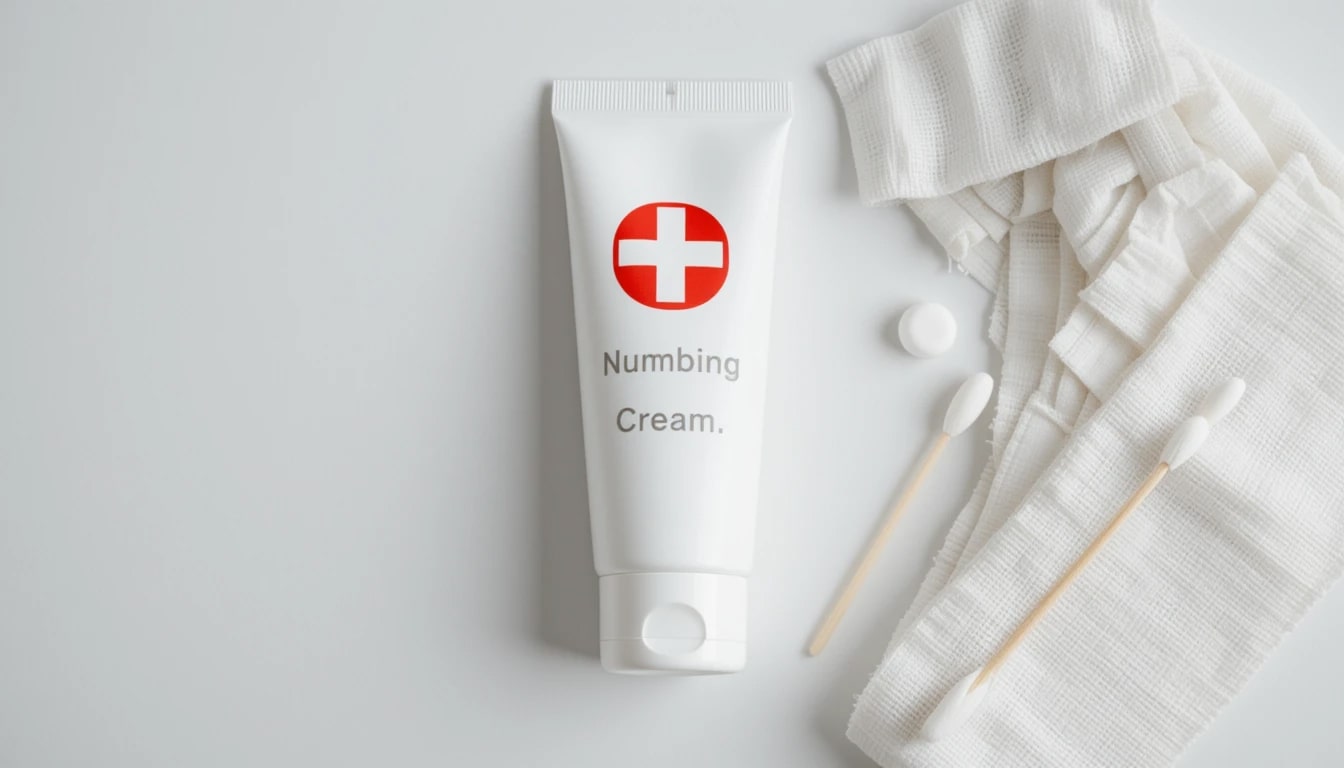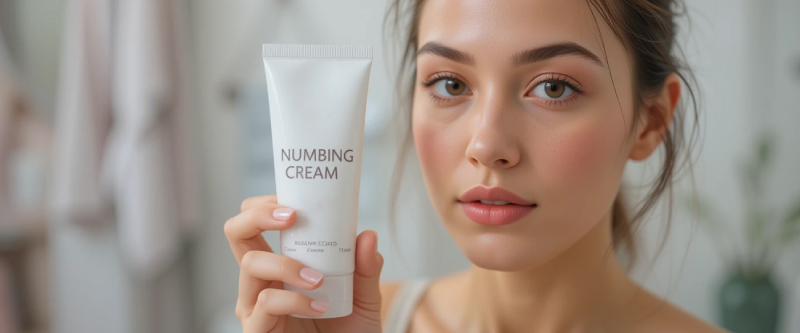Getting a cut can be painful, especially when it stings during cleaning or treatment. Whether it's a scraped knee, a minor kitchen injury, or a skin abrasion from shaving, the discomfort can make even a small wound feel like a big deal.
Numbing cream for cuts is a topical anesthetic that helps dull the pain by blocking nerve signals at the skin's surface. It’s beneficial for minor injuries, where reducing discomfort makes wound care easier and less stressful. By applying it correctly and choosing the right product, you can safely manage pain without overcomplicating your first aid routine.
In this article, we’ll explain how numbing creams work, when to use them, how to apply them safely, and what to avoid, all in clear, easy-to-follow terms.
Numbing Cream for Cuts: 5 Ways to Apply It Safely

Numbing cream is a topical product designed to reduce pain in a specific area of the skin. It contains active components like lidocaine or benzocaine, which are types of local anesthetics.
When used on cuts, numbing cream can make it easier to clean or dress the wound by dulling the pain for a short period.
It’s commonly used for:
- Minor skin injuries like scrapes or shallow cuts
- Painful wound cleaning
- Before minor procedures involving broken skin
How Numbing Cream Works on Cuts
Numbing creams work by targeting the nerve endings located near the skin's surface.
The active components, such as lidocaine or benzocaine, temporarily block the nerve signals that carry pain messages to your brain. This gives you a localized sense of numbness.
Depending on the cream, numbness can start within 15 to 30 minutes and last for up to a couple of hours. Some enhanced formulas found in products like Zensa are preferred for their faster action and minimal irritation on sensitive skin.
When to Use Numbing Cream for Cuts: 3 Things
Not all cuts are suitable for numbing cream. Here’s when it may be helpful to:
- Minor cuts or scrapes that don’t go deep into the skin
- Before cleaning a painful wound to reduce stinging
- Before a minor medical procedure, like removing a splinter or a dressing change
It’s essential to check the cream’s label and avoid using it on large or open wounds unless advised by a healthcare provider.
For shallow wounds, some users follow up with an antiseptic spray like Bactine to clean the area before applying an anesthetic cream. This combination can help prevent infection and reduce pain.
Best Types of Numbing Creams for Cuts
There are several types of numbing creams available, both over-the-counter and prescription-strength.
Over-the-Counter Options
These are usually safe for minor at-home use:
- Lidocaine 5% cream (available in many pharmacies, including CVS Health-branded options)
- EMLA (contains both lidocaine and prilocaine)
- LMX4 (fast-acting lidocaine-based cream)
Prescription-Strength Creams
These may be recommended for more painful procedures and should only be used under the supervision of a medical professional.
Each product varies in terms of strength, onset time, and duration. Some options are labeled as ointment or cream, but both serve the same purpose. Always read the instructions carefully to choose the right texture and strength for your skin.
How to Apply Numbing Cream Safely

Proper use is crucial for achieving safe and effective results. Follow these steps:
- Clean the area softly with mild soap and water
- Dry the skin thoroughly before applying
- Apply a thin layer of cream straight on and around the cut
- Wait the recommended time (usually 15–30 minutes) for the effect to take place
- Avoid overuse; stick to the amount and frequency listed on the product
Do not apply numbing cream to open, bleeding, or infected wounds. These areas may absorb too much of the product, increasing the risk of side effects. Always avoid mixing it with any antibiotic cream unless directed by a healthcare provider.
Precautions and Side Effects
While numbing creams are generally safe, they do come with some risks:
- Skin irritation or allergies, such as redness, swelling, or itching
- Systemic absorption, mainly if used on broken skin or in large amounts, can lead to more serious effects like dizziness or heart issues.
- Not always safe for children, pregnant women, or people with certain skin conditions. Check with a doctor before us.e
Always test a patch of skin first to check for any adverse reactions.
When Not to Use Numbing Cream
There are situations where numbing creams should be avoided:
- Deep or bleeding wounds that may need stitches or medical evaluation
- Cuts showing signs of infection, like pus, swelling, or warmth
- If the person has known allergies to anesthetic ingredients
- When the wound requires urgent care or has not improved in several days
Even products labeled “plus pain relief” or “extrastrength” should not be used unless the skin is intact and the cream is specifically designed for minor topical use.
Alternatives If Numbing Cream Isn’t Suitable
If numbing cream isn’t recommended for your cut, try one of these instead:
- A cold compress or cool cloth to reduce pain and swelling
- Oral pain relievers such as paracetamol (if appropriate)
- Natural skin soothers like aloe vera for mild irritation
- Use of an antiseptic like Bactine to clean and protect without numbing
These alternatives are especially useful for children or for areas where skin is too sensitive for topical anesthetics.
Conclusion
Numbing cream can be a helpful tool in relieving the pain of minor cuts, especially when used as part of a safe wound care routine. Knowing when to apply it, how much to use, and what products work best allows you to treat small injuries with more comfort and confidence.
If the skin is too sensitive or the cut seems severe, using an antibiotic ointment, antiseptic spray, or speaking to a professional may be a better option. Always avoid applying cream to open or infected wounds, and follow the product instructions carefully.
With the right approach, you can reduce pain, avoid complications, and support healing one thoughtful step at a time.
FAQs
No. Numbing creams should not be applied to open or deep wounds unless directed to do so by a medical professional.
Most creams start working within 15–30 minutes and last for 1–2 hours.
Only when recommended by a doctor. Some products are not safe for children to use.
No. Overuse can lead to side effects and may slow down the healing process. Use sparingly and only when necessary.


